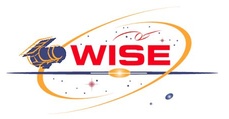

 |
Moon-flagging proposal for multiframe processing |  |
Following more testing and head scratching, it appears we need to exclude moon-affected frames as dictated by where on the sky the coadder cannot perform. In a nutshell, an 'inertial' mask is made using a moon-separation threshold and the available depth after the qascore filter is applied. Here's an example:
First, here's the standard (qascore>0) depth-map you've all seen before:
 |
Note that the available depth is highest on regions with the highest moon-hit rate (blue/cyan strips on the ecliptic). This is a consequence of the moon-toggling maneuver.
Here's a depth-map of the number of frames that fall within 24 degrees of the moon (also after qascore>0):
 |
And here's the ratio (in %) of the second map above divided by the first:
 |
The color scale shows the cumulative % in depth. This is effectively a prior probability map that a frame stack (at some resolution) contains a mooned frame. An "intertial" moon-mask can be made by thresholding this map. I'm finding that regions with a >~60% moon-hit-rate are trouble for the coadder - i.e., those blue strips on the ecliptic which I like to call "danger zones".
Using the above scheme and *optimal* moon-exclusion radii
of 19.5,22,24,24 degrees for w1,w2,w3,w4, here are three Atlas Image
sets (w1-w4) made over three of these danger zones.
These are at ecliptic long, latitude (deg):
case1: 344.11, 4.16;
case2: 12.28, 5.25;
case3: 38.11, 5.18.
Note: we don't do outlier rejection if the depth is <=4 (hence the "features" in those regions).
CASE 1:

|
CASE 2:

|
CASE 3:

|
I.e., holes are inevitable on top of the danger zones.
If instead we narrow down the moon-exclusion radius to say 16 deg (all bands), and still threshold at a depth-hit-rate of 60%, we get:
CASE 1:

|
CASE 2:

|
CASE 3:

|
What do you think? I vote for releasing clean reliable products, even if it means holes in the survey.
A collection of framesets out to 30 degrees from the moon on six
"moon-danger zones" can be found here.
Below are Atlas Image sets (w1-w4) corresponding to a "coadd danger zone" caused
by the 35 degree radius ring in Sergio's W3 moon mask. This danger zone is labelled in the following
moon-fraction depth map.
Two coadd runs are shown below: one that used this mask to
exclude frames (for all bands) prior to coaddition,
and another that didn't - i.e., all frames
were admitted to the coadder. As expected, the latter have higher
depth and S/N overall. This is an example where a moon-glow
feature has no/little impact on coadds, presumably because the available depth
is relatively high and the moon-glow is smoother and softer. The
background matching step may help remove this glow.
Frames rejected using W3 mask with ring for all bands:
No frame rejection prior to coaddition:
The framesets masked by the 35 degree ring feature, that touched
the above footprint, are shown
here.
Preliminary selenocentric masks for use in multiframe processing are shown
below. For bands 1 and 2, we assume simple moon separations of 19.5 and 22
degrees respectively. Bands 3 and 4 have the same mask and were made by
smoothing features that are common to Carl's and Sergio's masks.
Sergio's 35 deg ring and narrower diffraction spikes were adopted since
excessive and unnecessary flagging of frames was found with Carl's mask.
These geometries were confirmed by testing the new masking scheme
described above on several heavily moon-affected regions.
Impact from a W3 moon mask ring feature


Candidate Moon-masks

Last update - 2 August 2010
F. Masci, T. Conrow, C. Grillmair, S. Fajardo-Acosta - IPAC/Caltech